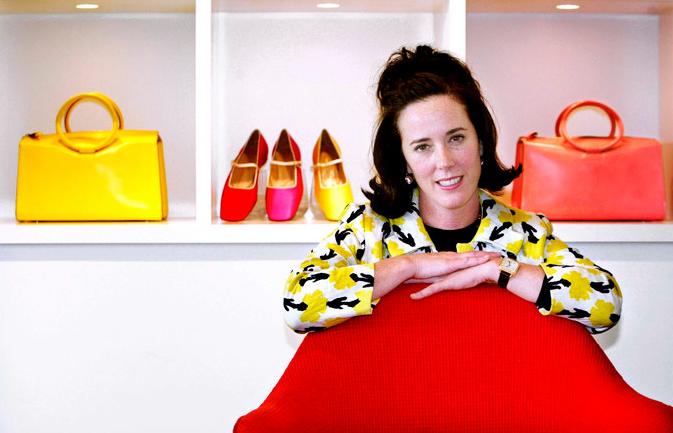Published: 13 July 2018
Country: UK and US

By Eline Jeanne
 The tragic death of Kate Spade ignited some to discuss the topic of newsroom diversity, specifically when it comes to those of a lower socio-economic background. Farai Chideya, American journalist and author, shared her thoughts of Twitter, expressing that she felt that Spade’s death was reported on with “class-based assumptions”. She references a specific newspaper lead, by the New York Times, which reads: “Buying a Kate Spade bag was a coming-of-age ritual for a generation of Americans.”
The tragic death of Kate Spade ignited some to discuss the topic of newsroom diversity, specifically when it comes to those of a lower socio-economic background. Farai Chideya, American journalist and author, shared her thoughts of Twitter, expressing that she felt that Spade’s death was reported on with “class-based assumptions”. She references a specific newspaper lead, by the New York Times, which reads: “Buying a Kate Spade bag was a coming-of-age ritual for a generation of Americans.”
According to Chideya, the assumption that a whole generation of American’s was in the position to buy a Kate Spade bag, which average’s around $200 per bag, is a clear sign that the writer of the piece is not fully in touch with those who live in lower socio-economic brackets. Chadiya concludes: “Again, this is not about Kate Spade herself. It’s about the signaling of privilege in news that should be for all. I am not against covering her death, but the paper might want to run an analysis on how this was covered and how it excludes audience.”
Newsroom diversity has a positive impact on all aspects of the news industry. Different people have access to different connections, communities, perspectives and opinions. Having a staff of diverse background, whether that is socio-economic, gender, race, sexuality, age or disability, will result in more informed and topical pieces. Moreover, a newsroom and its output should reflect the community it is informing, in order to maintain a strong connection with its readers. In a piece for the Guardian, Harrison Jones reiterates: “Their [newspapers] failure to recruit from a beyond a limited pool of people threatens not just their ability to accurately reflect UK society but also, in the long term, their ability to stay relevant to their readership.”
These benefits are slowly becoming clearer to media bosses; however, newsrooms still have a long way to go. Jones explains: “While many of those in the media increasingly realise how disconnected it is from the reality experienced by much of the UK, the barriers stopping those from poorer backgrounds or minorities making it into the country’s newsrooms remain dauntingly high, and may be getting higher.”
Current newsrooms in the UK do not reflect the diverse society of the country. A report by the Sutton Trust, published in 2016, found that “in journalism, about half (51%) of the country’s leading journalists were educated privately, less than one in five (19%) went to comprehensives. Over half (54%) went to Oxbridge.” Of the UK population, less than 1% attend an Oxbridge university; the disparity between the newsrooms makeup versus society is thus huge. Moreover, the two institutions have been critiqued in the past for lacking diversity in their student population.
A key element to the problem that has been mention in several reports is the prevalence of unpaid internships in the media industry. In a report titled “Fair Access to Professional Careers”, written by Alan Milburn, the issue of unpaid internships is frequently discussed: “All too often, unpaid internships are a key entry route into journalism and the media industry more generally.” Milburn goes on to explain that often journalism and media internships require a long time commitment, something which is not feasible for many. Milburn explains: “The practice in much of the media industry is more akin to treating interns as free labour. The problem with that is self-evident. It is possible only for those who can afford to work for free. It means that others – perhaps with equal or better claims on a career in journalism – are excluded from consideration.” In short, those who do not have the financial security to embark on an unpaid internship find themselves with extremely limited options for breaking into the media industry. It means that those of lower socio-economic backgrounds are very much excluded from the industry.
Milburn also mentions some other obstacles which are preventing more socio-economic diversity in the newsroom. He states that journalism has become “entirely a degree-only profession”, resulting in journalism being one of the “most socially exclusive of professions”. Milburn also mentions a lack of data collection in newsrooms, which makes it harder to assess newsroom diversity, and thus a harder issue to tackle.
The issue of newsroom diversity is rife, and structural changes need to be made to the media industry. Unpaid internships need to be removed, candidates should be judged on skills not education and data collection needs to improve. These changes are beneficial for a better news environment. To conclude with Chideya’s words: “Who is in the newsroom often determines what experiences are broad enough to be universalised in stories.”

